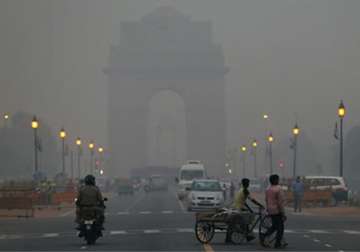Delhi's air pollution has been one-and-a-half times worse than in Beijing over the past week, according to an IndiaSpend analysis of PM 2.5 (Particulate Matter) concentration data.
The analysis is based on a comparison of data generated by IndiaSpend's #Breathe air quality monitoring sensor placed at RK Puram, Delhi with the one placed by the US government in its embassy at Beijing.
The average weekly PM 2.5 concentration in Delhi's air was 230.9 micrograms per cubic metre (µg/m³), giving it a ‘very poor' rating of air quality under the guidelines of the Central Pollution Control Bureau (CPCB). The rating could lead to ‘respiratory illness on prolonged exposure'.
Beijing, by comparison, recorded a PM 2.5 concentration of 139.7µg/m³ during the same period.
PM 2.5 are fine particulate matter found in the air with a diameter of 2.5 micrometres or less and are known to pose the greatest risk to human beings. Their measurement is considered to be the best indicator of the level of health risks from air pollution, according to the World Health Organization (WHO).
The PM 2.5 concentration level in Delhi has been higher than Beijing for six out of seven days under consideration, based on a comparison of daily averages.
Delhi's PM 2.5 concentration exceeded 250 µg/m³ thrice over the last week, placing it under ‘severe' category.
The ‘severe' rating means the PM 2.5 concentration is so high that it might affect healthy people and seriously impact those with existing diseases.
Beijing, by comparison, recorded ‘severe' rating only once in the same period.
Both Beijing and Delhi recorded ‘very poor' air quality in terms of PM 2.5 concentration (151 to 250 µg/m³) on three out of the last seven days.
Delhi had only one day with ‘poor' air quality (PM 2.5 concentration between 91 to 150 µg/m³) that could lead to breathing discomfort to most people on prolonged exposure.
Latest India News
